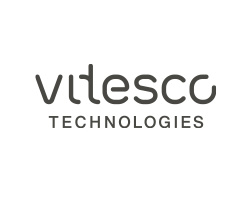Vitesco Technologies GmbH
RCV - Technology Development of Model Management (of Neural Networks)

The Customer
Vitesco Technologies develops innovative and efficient propulsion technologies for all types of vehicles. Its portfolio includes 48-volt electrification solutions, electric drives, and power electronics for hybrid and battery-electric vehicles. Furthermore, the product range counts electronic controls, sensors and actuators as well as solutions for exhaust after-treatment.
The Solution
The first step is to deploy the RCV platform in the customer's own AWS cloud environment and identify all the components required for the deployment process. Subsequently, a procedure should be designed meeting both the requirements of a central organization within a large corporation and the distribution of the models from the cloud to the production line. The first prototype of a central dashboard was developed to ensure this end-to-end management and sharing of models per product.
The idea is to enable process engineers to independently maintain, manage and qualify the models from the cloud via this easy-to-use interface. To achieve that, user management and connectivity to Active Directory, etc. will still be implemented in the future. Once the corresponding model is deployed on the respective edge device, the RCV solution can perform the evaluation of the camera images on-premises, visualize the result and release the model for production. This functionality was simulated in a test environment.
The Benefits
The found architecture and the associated software components could be used in a productive version to create the models by the respective groups of addressees. These models could then be tested and made available for other similar use cases in various plants around the world. The hybrid platform approach, in which on-premises and cloud infrastructures could be easily combined, thus creates the prerequisite for enabling collaborative work. More importantly, in terms of the traceability of the assessment decision, the models could be created, trained and managed in series production. Support for the retraining process, which becomes necessary in the event of process fluctuations or new requirements, should subsequently complete the mapping of the entire model lifecycle.
This will enable the creation and release of initial models by employees of a central industrialization department. These models can later be conveniently transferred to the department responsible for series production at the respective plant. Along with the use of more efficient AI-based inspection, it enables a necessary central and scalable approach for the worldwide support of optical inspections.
